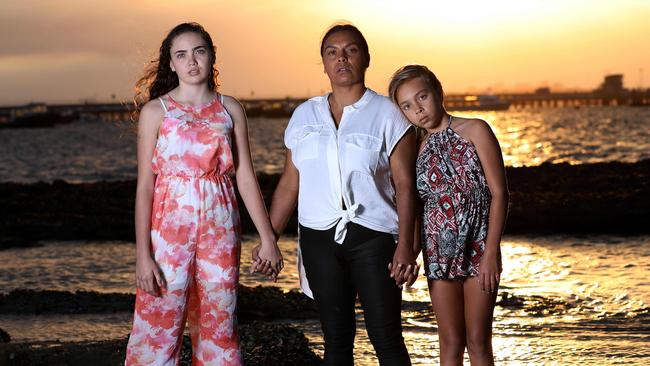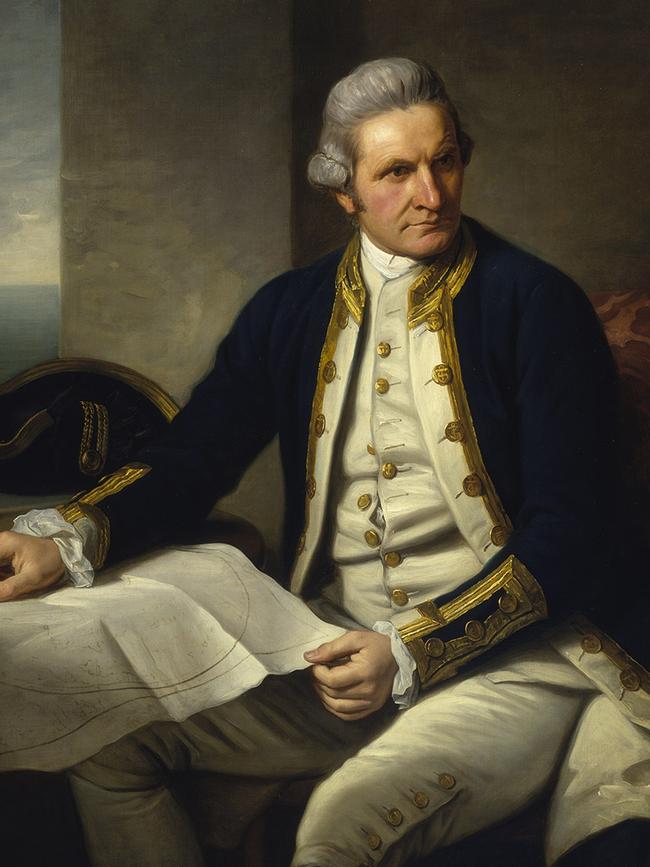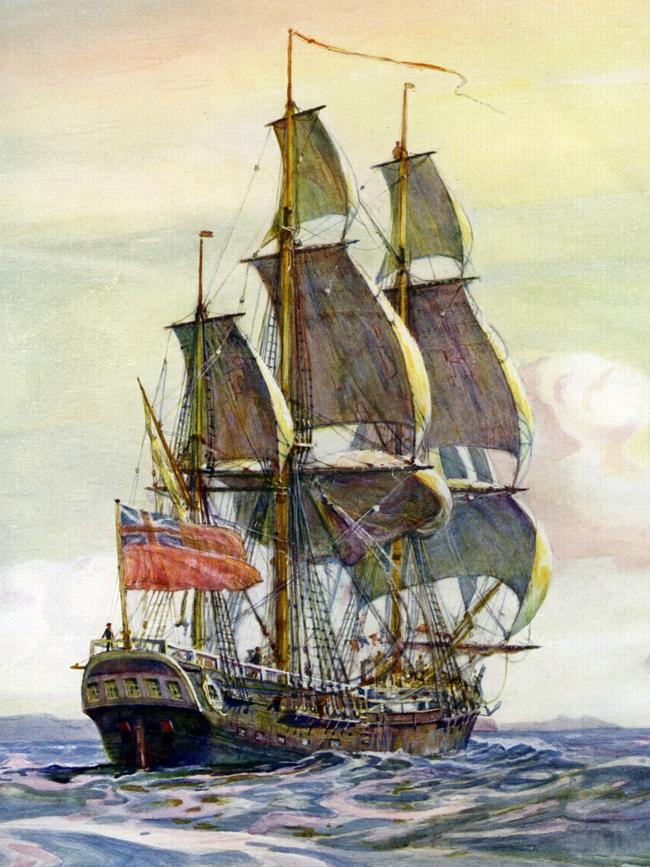A meeting of two worlds that can unite our nation as one
On this day 250 years ago, James Cook walked on the shores of Botany Bay, treading the foundational steps towards our nation of Australia.

On this day 250 years ago, Lieutenant James Cook walked upon the shores of Botany Bay, treading the foundational steps towards the most wondrous, complex and shared endeavour that we all play a role in today: our nation of Australia.
For some, this day marks the most pivotal moment in HMB Endeavour’s three-year voyage of discovery that transformed humankind’s understanding of the world and its people — and transformed what we knew of mathematics, navigation, geology, geography, botany, psychology, nutrition, astronomy, medicine, cartography and languages.
For others, this day will only ever mark the first chapter in the story of Aboriginal dispossession.
■ CAPTAIN COOK REDISCOVERED: Read Trent Dalton’s brilliant series
But in the treacherous waters of modern Australia’s foundational history, Cook scholars and indigenous elders alike will find common ground today in the sharing of stories from both sides of that historic Botany Bay shoreline. Stories of the impossible, providential lengths Cook and his courageous 94-person crew had to go to just to get here. Stories of the brave Gweagal men who met them on arrival — a deeply complex and historic meeting of distant worlds. Long may we recognise that meeting’s repercussions respectfully. Long may we celebrate Cook’s unparalleled achievements wholeheartedly.
“The anniversary is a merging of our histories,” said Scott Morrison. “A point in time from which we embarked on a shared journey, which is realised in the way we live today. Our shared history tells the story of all of us.
“We honour the resilience, wisdom, custodianship and stewardship of Aboriginal and Torres Strait Islander Australians. Indigenous culture is a fundamental element of modern Australia. We also acknowledge the extraordinary individual of James Cook, whose passion for science and discovery played such a critical role in Australia’s journey to the nation we are today.”

Kate Cook, 26, is a Melbourne-based copywriter who was raised on the belief that the far-reaching branches of her cluttered family tree feature the name of the man who added another hemisphere to world maps in the late-1700s.
“We always had a sense of pride in that possible connection,” she says. “He was a good man and he did some extraordinary things, but the ramifications of those things were not all positive. I hope this is a day that highlights those two perspectives. I’d love this date to be an opportunity moving forward where both these voices from our history can be heard.”
Yuin woman Latoya Brown works at a Sydney tour company that shares the local Aboriginal culture of the La Perouse and Watson Bay areas with members of the public. “A lot of our history has been told one-sided,” she said. “I don’t think it is spoken of widely enough. Continuing to share stories and heal as one Australia will be better in the long run than trying to divide us all the time.”
The winds were southerly that day and the weather was clear. Cook approached the shore of New Holland with trepidation, the dangerous encounters on the shores of New Zealand still fresh in his mind. His instructions from King George III were clear: “You are to observe the Genius, Temper, Disposition and Number of the Natives, if there be any, and endeavour by all proper means to cultivate a Friendship and an Alliance with them, making them presents of such Trifles as they may Value, inviting them to Traffick, and Shewing them every kind of Civility and Regard.”


Cook saw two natives with spears, an older man and a younger man, at the edge of the water, suggesting through their language and their gestures that Cook and the men in his pinnace — including legendary botanist Joseph Banks — would do well to row back to the wide-bottomed coal boat named Endeavour anchored behind them. Cook wrote of the historic encounter in his journal: “We then threw them some nails, beads ashore which they took up and seem’d not ill pleased with in so much that I thought that they beckon’d to us to come ashore but in this we were mistaken for as soon as we put the boat in they again came to oppose us, upon which I fired a musket between the two which had no other effect than to make them retire back where bundles of their darts lay and one of them took up a stone and threw at us which caused my firing a second musket load with small shott and although’ some of the shott struck the man yet it had no other effect than to make him lay hold of a Shield or target to defend himself. Emmediatly after this we landed, which we had no sooner done than they throw’d two darts at us. This obliged me to fire a third shott, soon after which they both made off, but not in such haste but what we might have taken one, but Mr Banks being of opinion that the darts were poisoned made me cautious how I advanced into the woods.”
Oral histories of the Gweagal elders of Botany Bay speak of the bravery of the two men who confronted Cook’s party which had not followed traditional protocols of making respectful prior arrangements before entering their land. Other oral histories speak of natives on shore viewing Cook and his men as ghosts and their famous coal vessel as a supernatural floating island. The sailors who ran up and down the boat’s mast poles at sea were seen as scrambling, oversized possums.
So many questions of perspective. So many points of view. This week is a chance for us to explore each one. As expected, anniversary plans have been drastically altered by the grip of COVID-19 but there are still many valuable ways to explore both sides of this story this week.
The National Museum of Australia, the Australian National Maritime Museum and the National Library of Australia all offer online resources and exhibitions that build on the growing “view from the ship, view from the shore” approach to recalling the Endeavour voyage. The National Museum’s online exhibition, Endeavour Voyage, for example, explores the 126 days Cook and his crew travelled up the east coast, from Point Hicks in southern Victoria to Cape York, Queensland. Historians and indigenous elders are coming together in all these endeavours to tell their stories from either side of the shoreline.
“If this date becomes an opportunity for our nation to advance further, together, then that would be an incredible result,” said Kate Cook.




To join the conversation, please log in. Don't have an account? Register
Join the conversation, you are commenting as Logout